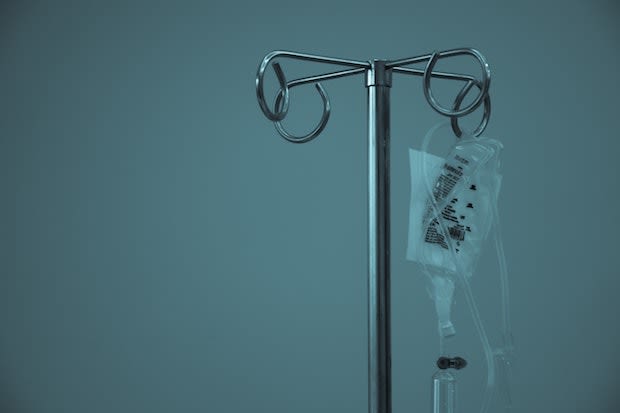Table of Contents
II. Different Types of Anesthesia
III. Possible Side Effects of Anesthesia
IV. Drugs That May Reduce Side Effects of Anesthesia
What is Anesthesia?
Anesthesia is a necessary medication used for intensive surgeries and operations. Anesthesia is a fantastic medical invention that allows patients to undergo procedures pain-free. Most people will experience anesthesia at some point in their life, so it is essential to understand the different types of anesthesia and the potential risk.
Going under the knife poses many risks, and adding anesthesia to the mix raises the risk of complications. Before the invention of anesthesia in the mid-1800s, surgeons had to hack off limbs or remove teeth with only opium or high-proof alcohol. Now that medical technology is much more advanced, modern anesthesia can ease pain and relax the patient. Modern local anesthesia blocks the nerves connected to a particular body region, preventing pain from registering in the brain. [1]
There are several different types of anesthesia, and each one affects the body differently. Skilled anesthesiologists use machines to administer the drug cocktail to the patient. Before you undergo anesthesia, you may want to learn more about the types of anesthesia and the potential effects on the body. Anesthesia is so common that there are medications available to assist in the drug's side effects after surgery. Learn more about medications like Transderm Scop (scopolamine), Zofran (ondansetron), and anesthesia uses below. [2]
The goal of every type of anesthesia is to keep the patient comfortable and pain-free. Your doctor will determine which type is right for your health and the procedure you need. Your doctor will evaluate the following before your surgery: It is essential to answer your doctor's questions accurately to receive an adequate amount of anesthesia. The types of anesthesia include: This is the most common type of anesthesia used for major operations like knee and hip replacements and heart surgeries. An anesthesiologist will prescribe various drugs that affect the central nervous system. When the drugs are administered, they have widespread effects like amnesia, immobility, and analgesia (the inability to feel pain). [3] Once your surgery is complete, your anesthesiologist will reverse your medication, waking you up. Everyone reacts to anesthesia differently. Some people have no noticeable side effects, while others may experience nausea, vomiting, or chills. Your throat may also be sore because a breathing tube is inserted to help your breathing during serious procedures. You are generally not allowed to drive after this type of anesthesia, so someone you know will have to take you home. It takes about a day or two for the effects of general anesthesia to wear off. [4] IV, or intravenous sedation, is used for less serious conditions. IV sedation may be used for procedures like biopsies or the use of a scope to examine the throat or colon. This is monitored anesthesia care, which is also known as conscious sedation or twilight sedation. Analgesic medication is often combined with a sedative to create this type of sedation. IV sedation can vary significantly, ranging from minimal sedation (feeling drowsy) to deep sedation (you won’t remember the procedure). You will not be fully unconscious, but you may get oxygen treatments if you receive moderate or deep sedation. Patients will wake up fairly quickly, and you will recover faster and typically go home sooner. [5] Your doctor will use this type of anesthesia for procedures that can occur while you are awake. You will be alert for the entire procedure or surgery but will not feel any pain in the area that is being treated. Local anesthesia is typically administered with a single injection. You may receive local anesthesia for dental procedures, skin biopsy, breast biopsy, repairing a broken bone, or stitching up a deep cut. You will have a quicker recovery time and fewer complications with this type of anesthesia. If you do not want to be fully unconscious under general anesthesia, your doctor may administer local anesthesia instead if it can be performed safely. Local anesthesia procedures are also typically less expensive than those that require more intense sedation. [6] Regional anesthesia involves numbing a large portion of the body, such as from the waist down. This medication is delivered through an injection or catheter. Epidurals and spinal blocks used for childbirth are the most commonly used forms of regional anesthesia. This type allows the person to be awake and deliver a baby without feeling an overwhelming amount of pain. Epidurals and spinal blocks also prevent harmful sedatives from affecting the baby. This type is often fairly safe and usually has fewer complications than general or sedation anesthesia. Your doctor will monitor you closely if you have an epidural or spinal block during childbirth. [7] Anesthesiologists are trained for years to administer medications to patients undergoing surgery, but it is important to know any side effects during and after the procedure. Each type of anesthesia has its specific side effects. Most of these effects are minor, but some may be serious. General anesthesia side effects: Because you are fully unconscious, it comes with the most side effects. You will be monitored before, during, and after your procedure for any complications. Nausea and vomiting can occur for the first few hours or days after surgery. This is triggered by the medication, motion, or type of surgery. You may also be confused for up to a week after you regain consciousness. The narcotic component of the anesthesia can cause an itching sensation. IV monitored and regional anesthesia side effects: There are typically fewer side effects of IV sedation than general anesthesia. Common side effects might include a headache a few days after the procedure and minor back pain if the injection was in the spine. Being sedated from the waist down may cause difficulty urinating after the procedure. Bleeding under the skin may occur at the injection site. Local anesthesia side effects: This one is the least likely to cause side effects. Side effects are usually minor because local anesthesia involves a one-time injection. You may be sore or itchy where the medication was injected. If you had a biopsy taken, you might experience slight pain where your doctor took a skin or tissue sample. [8] As mentioned earlier, everyone experiences anesthesia differently. Once you know the effects of anesthesia on the body, you may plan for any side effects that may occur after a procedure. It is important to note that your anesthesia medications may differ every time you have surgery. If you are prone to nausea and vomiting after anesthesia, you may be able to use Transderm Scop (scopolamine). This drug is administered in patches that correct the imbalance of acetylcholine and norepinephrine. These two substances are generally thrown off if a person is experiencing motion sickness, so it blocks the feeling of sickness to the brain. This patch will release medication into the body over three days, which should assist in nausea side effects. [9] Zofran (ondansetron) can also be used to assist in nausea symptoms. This drug is more commonly used for cancer drug treatments like chemotherapy or radiation. Like anesthesia, Cancer treatments also involve a mixture of several drugs, resulting in side effects like vomiting or nausea. The ODT formulation of this medication is dissolved on the tip of the tongue and is not meant to be chewed. Talk to your doctor to determine if you can use an anti-nausea drug after your anesthesia treatment. The content in this article is intended for informational purposes only. This website does not provide medical advice. In all circumstances, you should always seek the advice of your physician and/or other qualified health professionals(s) for drug, medical condition, or treatment advice. The content provided on this website is not a substitute for professional medical advice, diagnosis, or treatment.
Different Types of Anesthesia
a. General Anesthesia
b. IV monitored sedation
c. Local anesthesia

d. Regional anesthesia
Possible Side Effects of Anesthesia

Drugs That May Reduce Side Effects of Anesthesia
